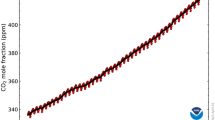Abstract
For highly urbanized cities where there is a scarcity of land available for landfilling, incineration of refuse is a feasible solution for solid waste disposal. After incineration, about 20% by weight of fly ash and other residues are produced and disposed of by landfill. Leachate tests carried out on samples of fly ash show that the heavy metal concentrations of the leachate are in excess of the permissible limits set by WHO. Lime and cement are used to stabilize the fly ash. The concentrations of heavy metals in the leachates of lime and cement treated fly ash are non-detectable. In additional to pollution control, the lime and cement treated fly ash significantly improves the properties of soft clay.
Similar content being viewed by others
References
Bagchi, A. and Sopcich, C.: 1989, ‘Characterization of MSW Incinerator Ash’, J. Environ. Eng., ASCE, 115 (2), 447–452.
Francis, C. W. and White, G. H.: 1987, ‘Leaching of Toxic Metals From Incinerator Ashes’, Water Poll. Cont. Fed., 59 (11), 979–986.
Author information
Authors and Affiliations
Rights and permissions
About this article
Cite this article
Hwa, T.J. Leachate of fly ash derived from refuse incineration. Environ Monit Assess 19, 157–164 (1991). https://doi.org/10.1007/BF00401308
Issue Date:
DOI: https://doi.org/10.1007/BF00401308




